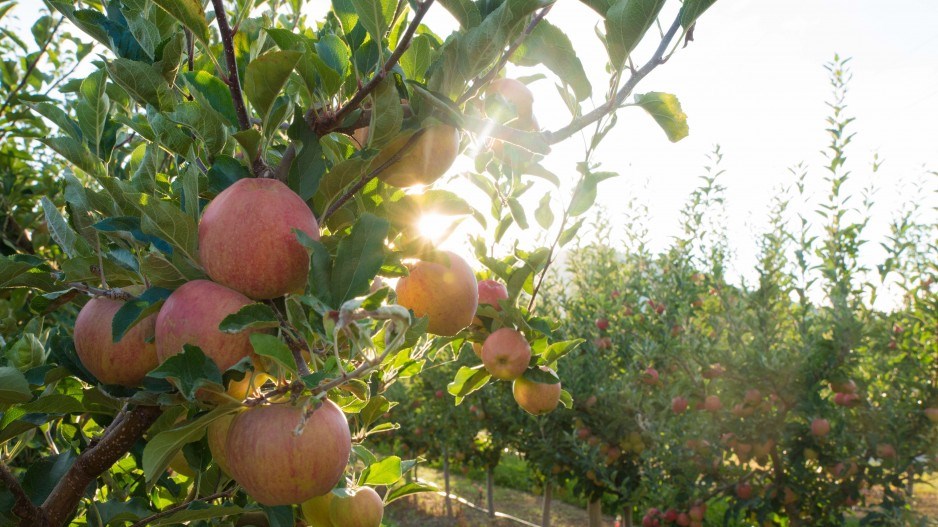A recent report from the Asia Pacific Foundation of Canada has identified six exports facing “special risk” of being hurt by the recent U.S.-China Phase 1 trade agreement, and two are significant B.C. products.
Among the six products named by the foundation’s preliminary analysis of Canadian exports at risk are fruits/nuts and mollusks. B.C. is a leading producer in Canada for both.
Under the Phase 1 trade deal signed in January, Beijing agreed to buy US$200 billion worth of additional U.S. goods and services above 2017 levels for the next two years. Experts have expressed concern that China may achieve those numbers by switching to U.S. suppliers for commodities now supplied by Canadian producers.
According to the report, among the 547 types of U.S. goods Beijing has agreed to increase purchases of are mollusks, which puts Canada’s $40 million Chinese export market for clams at risk. Meanwhile, the inclusion of U.S. frozen fruits and nuts also puts the $20 million Canadian annual export market to China on shaky ground.
The key, said foundation research specialist Kai Valdez Bettcher, will be Beijing’s choice as to which suppliers it will abandon in order to fill its new U.S. quotas – and that decision is likely to be highly political.
“Most significantly, Canada needs to start negotiating clear rules of understanding regarding trade with China in an attempt to decouple trade issues from the political standoff over the arrest of Meng Wanzhou in Canada and Michael Kovrig and Michael Spavor in China,” Valdez Bettcher said. “Not doing so could lock the present, difficult situation into a long-term, structural crisis for Canadian traditional exporters of goods, particularly agricultural goods, to China.”
He added that the Phase 1 U.S.-China trade deal will likely hurt three main geographical areas of Canada – Atlantic provinces, due to a risk to lobster exports; the Prairies because of commodities like flax, wheat and beef; and B.C., Canada’s top producer of oysters, clams, grapes, blueberries and cranberries.
The report also outlines a potential risk to fish exports to China, although Valdez Bettcher noted that U.S. fish exports to the Chinese market are already very strong, limiting the risk to a relatively smaller Canadian share of the pie. The bigger risk on that front, he said, is the potential loss of business for specific fish products like salmon oil, which is among the goods Beijing has agreed to buy more of from the United States. Valdez Bettcher said it will be important for Ottawa to be more proactive as its trade relations with its two biggest partners – the United States and China – hit headwinds in 2020.
“On the whole, Phase 1 of the U.S.-China trade deal should serve as a wake-up call to Canadian exporters and policy-makers,” he said. “Canada would do well to begin seeking alternative markets for these at-risk products while accelerating the pace of negotiations … to mitigate the impending impacts to free competition and trade on both sides of the Pacific. Inaction is no longer an option.”
Not all western Canadian analysis of the Phase 1 deal’s possible effect on Canada is as grim, however. In a report published a few days before the Asia Pacific Foundation’s analysis, Canada West Foundation policy analyst Sarah Pittman said the deal has the potential to give Canada a “brief respite from some uncertainty the global economy has faced,” although she noted such effect may be temporary.
There is also the possibility that China may extend its new rules for imported beef, which apply to U.S. imports in the Phase 1 deal, to Canadian beef because of the North American integrated supply chain, Pittman said.
But she agreed that the risks remain, since China’s agreement to raise its purchases of U.S. agricultural goods by $40 billion will come at the expense of other exporters such as Western Canada. Pittman also expressed concern that the deal may further distance Ottawa from Beijing in a relationship that has quickly deteriorated in the last 30 months.
“Some are worried that this [trade deal] will damage any influence we have with China,” Pittman said. “If China buys more agriculture products from the U.S. and less from Canada, this will mean Canada has even less leverage in the diplomatic arena.”




